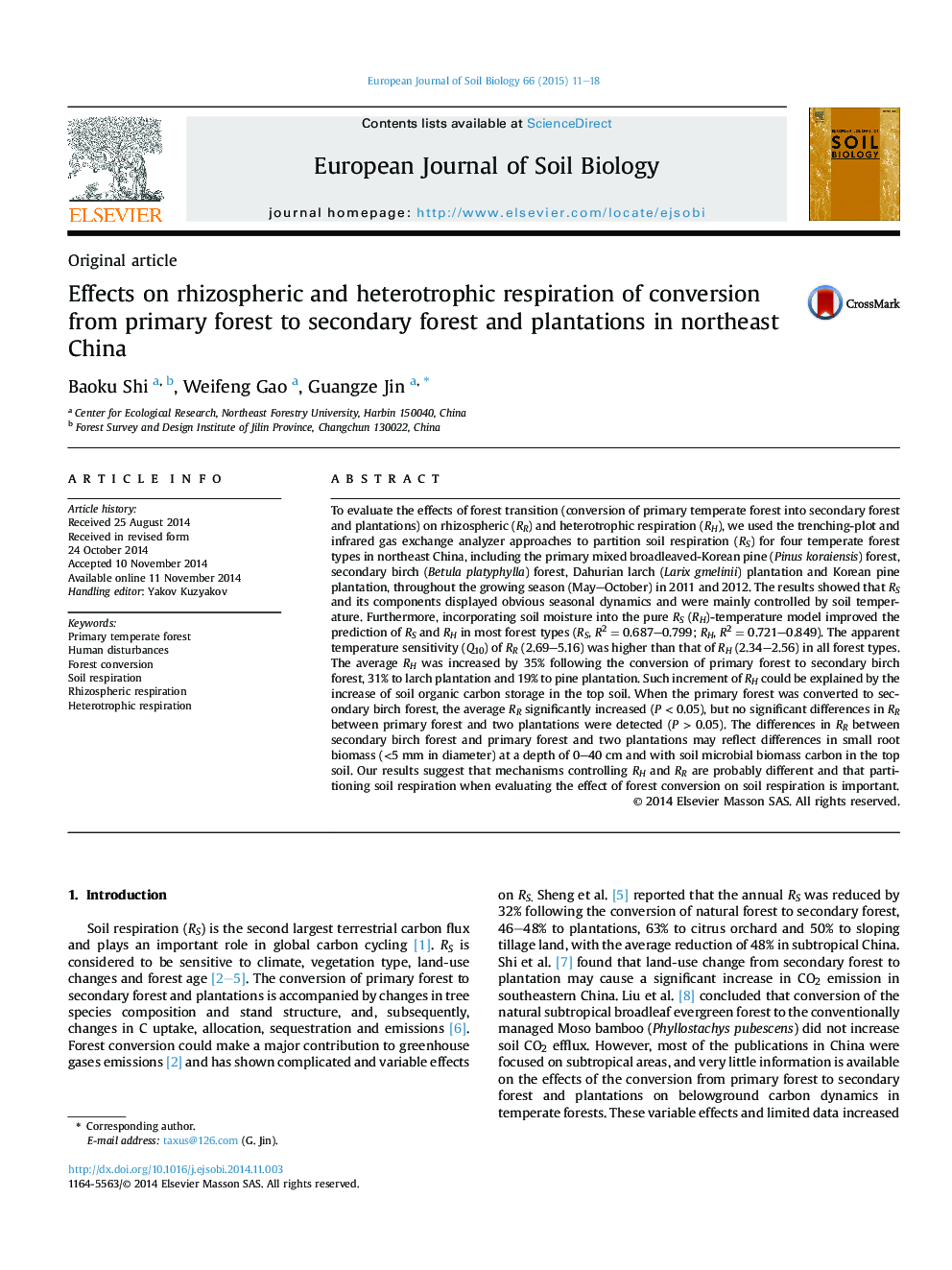| کد مقاله | کد نشریه | سال انتشار | مقاله انگلیسی | نسخه تمام متن |
|---|---|---|---|---|
| 4391807 | 1618126 | 2015 | 8 صفحه PDF | دانلود رایگان |
• After conversion, soil respiration and heterotrophic respiration increased.
• Heterotrophic respiration revealed a positive correlation with top soil organic C.
• Higher rhizospheric respiration in secondary birch forest than primary forest.
• Rhizospheric respiration did not differ between primary forest and two plantations.
• Rhizospheric respiration was controlled by biotic variables.
To evaluate the effects of forest transition (conversion of primary temperate forest into secondary forest and plantations) on rhizospheric (RR) and heterotrophic respiration (RH), we used the trenching-plot and infrared gas exchange analyzer approaches to partition soil respiration (RS) for four temperate forest types in northeast China, including the primary mixed broadleaved-Korean pine (Pinus koraiensis) forest, secondary birch (Betula platyphylla) forest, Dahurian larch (Larix gmelinii) plantation and Korean pine plantation, throughout the growing season (May–October) in 2011 and 2012. The results showed that RS and its components displayed obvious seasonal dynamics and were mainly controlled by soil temperature. Furthermore, incorporating soil moisture into the pure RS (RH)-temperature model improved the prediction of RS and RH in most forest types (RS, R2 = 0.687–0.799; RH, R2 = 0.721–0.849). The apparent temperature sensitivity (Q10) of RR (2.69–5.16) was higher than that of RH (2.34–2.56) in all forest types. The average RH was increased by 35% following the conversion of primary forest to secondary birch forest, 31% to larch plantation and 19% to pine plantation. Such increment of RH could be explained by the increase of soil organic carbon storage in the top soil. When the primary forest was converted to secondary birch forest, the average RR significantly increased (P < 0.05), but no significant differences in RR between primary forest and two plantations were detected (P > 0.05). The differences in RR between secondary birch forest and primary forest and two plantations may reflect differences in small root biomass (<5 mm in diameter) at a depth of 0–40 cm and with soil microbial biomass carbon in the top soil. Our results suggest that mechanisms controlling RH and RR are probably different and that partitioning soil respiration when evaluating the effect of forest conversion on soil respiration is important.
Journal: European Journal of Soil Biology - Volume 66, January–February 2015, Pages 11–18
